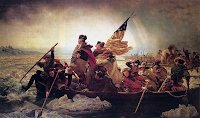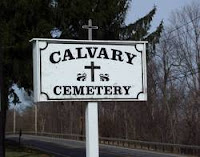 |
| Low Ellington, Yorkshire, England |
 |
| 1690's home of Henry Huddleston Sr. |
 |
| Not the cereal...the religion |
 |
| Christ Church, Philadelphia |
 |
| Ben Franklin's newspaper 1754 |
In December of 1688, Henry HUDDLESTON bought 100 acres of land at the junction of two major Indian trails, ...a place that would be known as "Four Lanes End" (later the village would be named Attleboro, and today Langhorne), in Bucks County, Pennsylvania. In 1699, he bought another 80 acres to add to this holdings, where he built a home in 1690 that still remains standing in 2010. The home at 154 West Marshall Avenue in Langhorne, Bucks Co., Pennsylvania included two ponds behind the house for keeping the milk containers cold until they could get to market.
In 1701, at about age 41, Henry HUDDLESTON met and married Elizabeth COOPER, the 28 year old daughter of a Quaker family who had only been in America for 3 years, coming from Henry's hometown of Snapt, in England. With the marriage came 200 acres of land that Elizabeth had inherited at the deaths of her father and sister. Around 1705, Henry and Elizabeth HUDDLESTON built a new home at 303 Maple Street in Langhorne, and it also remains today.
Unfortunately for Elizabeth, after only 5 years of marriage, Henry HUDDLESTON made his will on May 17, 1706, and died soon after at age 46. Elizabeth, now 33 and pregnant, was left with a 3 year old son, a 2 year old daughter, and her unborn baby she would name Henry Jr., and Elizabeth herself died in 1720, at only age 47.
Henry HUDDLESTON Jr. never met his father, and his mother died when he was 14, but he remained in Four Lanes End until he met and married Mary WILKINSON in the Anglican Christ Church in Philadelphia, Pennsylvania, the same church attended by Benjamin Franklin.
Mary had inherited 200 acres near Middletown in Plumstead Township in Bucks County, and that is where Henry and Mary HUDDLESTON settled. In 1739, Henry HUDDLESTON Jr. went to the office of Benjamin Franklin's newspaper, the Pennsylvania Gazette, and entered the following ad:
"Run away on the 5th Inst from Henry Huddelston, of Plumsted Township, Bucks County, an Irish Servant Man, named Charles Cambell, aged about 24 Years, indifferent tall and well set, with long blackish Hair, and long visag'd: had on when he went away, a homespun Coat and Jacket of a yellowish colour mix'd with black, and brass Buttons on both; took with him a pair of old leather Breeches, and white linnen Drawers, two new felt Hats, two pair of new Shoes with peeked Toes, and steel Buckles in one of the pair, two homespun Shirts much worn, white thread Stockings, a Barcelona silk Handkerchief, and a small Gun. N.B. He is suppos'd to be in Company with one Martha Bostuck, a short well set Woman, with red Hair, and pockbroken; and has a Child with her of about 5 Years old, who has red Hair also. Whoever secures the said Servant, so that his Master may have him again, shall have Three Pounds Reward, and reasonable Charges, paid by HENRY HUDDLESTON."
In 1770, Henry Jr. and Mary were saddened when 3 of their 4 sons, including direct ancestor Abraham HUDDLESTON, moved about 400 miles away to Bedford County, Virginia. For the next ten years, Henry and Mary remained on their 300 acre farm, with its 3 horses, 3 cows, and 10 sheep. In December, 1776, General George Washington's Army was in and around Bucks County before and after the crossing of the Delaware River to surprise the enemy at Trenton, New Jersey. Henry and Mary must have observed the American Revolution from very close up, as General Washington even buried 166 of his soldiers in a small cemetery across the street from the old HUDDLESTON home in Four Lanes End.
It is not known whether the young HUDDLESTON men, who were in their 30's and 40's, went to Virginia during the Revolution because of their Quaker heritage, or for other reasons, but we can find no HUDDLESTON soldiers in that period. On February 21, 1780, Henry HUDDLESTON Jr. wrote his last Will and Testament, the first paragraph of which is a pleasure to read:
"In the name of God Amen. I, HENRY HUDDLESTON of Plumstead in the County of Bucks in the Province State or Commonwealth of Pennsylvania, yeoman, being weak in body but of sound and perfect mind and memory. Thanks be given to Almighty God for the same and considering that is appointed for all men once to die, do make, ordain, and publish this my last Will and Testament, in manner and form following. First and principally I commend my soul to God who gave it, and my body to the earth, to be buried in Christian like and decent manner, at the discretion of my executors hereafter named and as touching such worldly estate as lands, goods, chattles and effects whatsoever wherewith it has pleased God to bless me in this life. I do give, devise, bequeath and dispose of the same in the following manner, that is to say;"
Here is the end of the HUDDLESTON line in Pennsylvania, from religious refugees to colonial landowners, to be continued in Virginia at a later time.

















